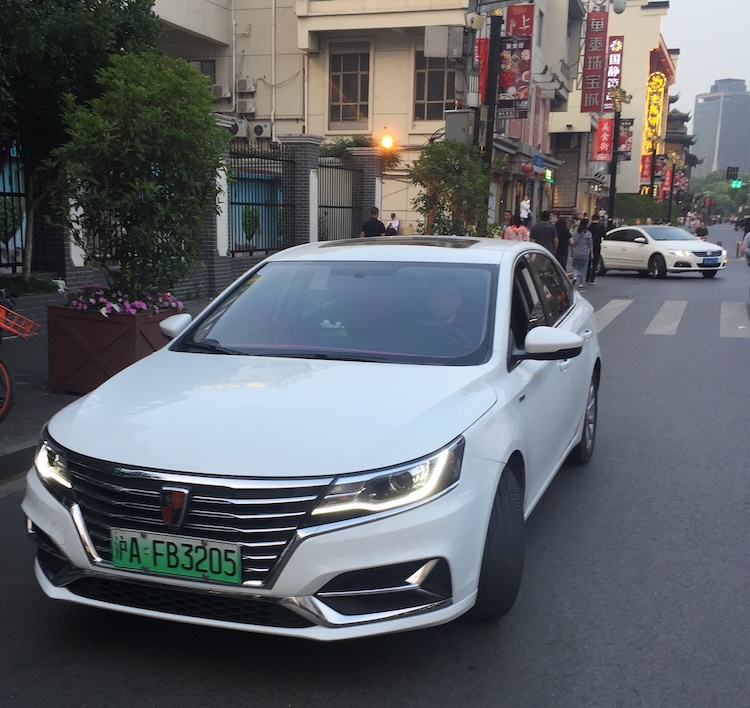Ann Arbor (Informed Comment) – Car News China reports that in the first half of 2025, consumers in that country bought 10,891,000 passenger vehicles. But here’s the catch. They bought 5,458,000 EVs and 5,433,000 gasoline cars. Look carefully at those numbers. They bought more EVs than internal combustion engine cars. To be precise, 50.1% of new cars bought in China this year were battery electric or plug-in hybrid. China isn’t the first country to reach this milestone. But Norway, where EVs predominate, is a country of 5.6 million. China’s population is 1.4 billion.
So China is the first huge country to reach this milestone.
Moreover, global EV sales in the first half of the year (h1) came to 9 million cars, so a majority of them were sold in China, in just one country.
China is, as I’ve said before, on its way to being the first electrostate.
In a very smart article, Michael Barnard at CleanTechnica argues that China is set to reach 80% EV dominance in new car sales within three to five years.
EV sales in the US were expected to hit a 10% market share by the end of 2025 before Trump happened, but that projection has had to be revised down to 8.5% in light of Trump’s anti-EV legislation. If the American elite had inexplicably schemed to demonstrate the superiority of socialism to capitalism they couldn’t have done better than to put Trump and his Suicide Squad into power at a crucial juncture in global economic history.
There is more good news here. EVs grew 33% year over year in the Chinese market, which accounts for them pulling ahead of gasoline cars. The other part of that equation was that sales of gasoline cars were down 5.2%.
The International Energy Agency believes that 2025 could be the year China’s petroleum use peaks, so that it will decline from here on in. Good news for the planet, bad news for Texas and Saudi Arabia and for oily Donald Trump and his dirty-energy puppeteers.
Even more good news: Battery-electric or pure EVs in China increased to 61% of EV sales, up by 2%, over plug-in hybrids, which were down 2% to 39%.
Pure EVs in parts of Europe with a green grid like Sweden cut carbon dioxide emissions by 80% over gasoline cars (it costs some carbon to make them and to mine and install the batteries). Plug-in hybrids, which use gasoline when the battery runs down, only cut CO2 by 20%. While a 20% reduction in transportation emissions is undeniably a good thing, it isn’t nearly enough given the planetary crisis in which we find ourselves.
It is one of the reasons that when our family bought a new car three years ago, we got a pure EV. People often prefer plug-in hybrids because they have range anxiety and want to be assured they can fill up the tank if necessary. But last month we made a 300 mile round trip to see relatives with no difficulty at all, filling up at a charger halfway between our home and our destination. But note that some 95% of trips taken by automobile are 5 miles or less, so an EV makes much more sense than a plug-in hybrid. Plus battery-electric EVs don’t need costly gasoline or oil changes. We have a home fast charger and rooftop solar, so when we charge during the day at home, we’re putting free sunshine in the tank
Anyway, a hefty majority of Chinese EV-buyers agree with me, and the majority is getting bigger every year. That choice is made easier in China because of the widespread and efficient charging infrastructure. The Biden administration’s Inflation Reduction Act had aimed to catch the backward, ramshackle old US up by encouraging a rapid build out of charging stations, but Trump and the oily GOP have sabotaged that development. For significant carbon reduction from vehicular traffic, pure or battery-electric cars are necessary. Some 24% of global emissions come from road transport and passenger cars are roughly 61% of that.

“EV Taxi in Shanghai, 2019” © Juan Cole
And these developments don’t just pertain to China. In the first half of 2025 (h1), China sent over a million EVs abroad to be sold there. That broke a record by a mile. Because in h1 2024, they exported 606,000 EVs. So they saw a 74.3% increase in export sales in this sector in just one year. Show me any economic transaction that grows 74% in a year and I’ll show you a winner.
The US only has 3.9% of this EV export market, compared to China’s 22.6%. Trump the Terrible’s policies are aimed at ensuring that this US share plummets. Since the rest of the world will quickly electrify, if the US is stuck making smelly old gasoline cars no one wants, its industrial base will wither away. Malcolm X advised people to learn Arabic and Chinese as the languages of the future, Arabic for religion and Chinese for politics. At the height of Maoist irrationality in the early 1960s, he couldn’t have foreseen that Chinese might be the language of the future for economics.


 © 2025 All Rights Reserved
© 2025 All Rights Reserved